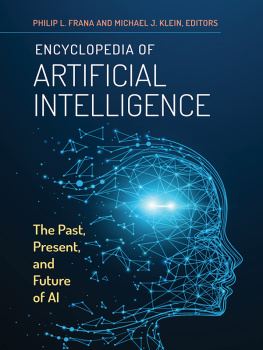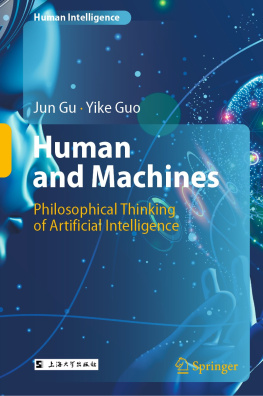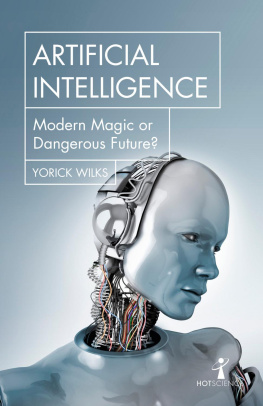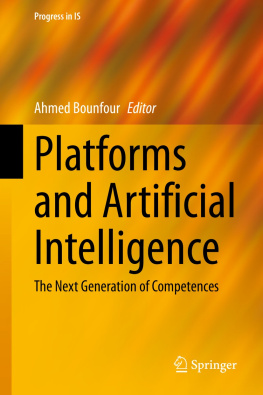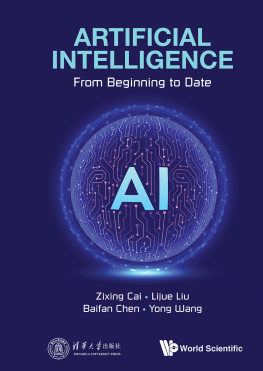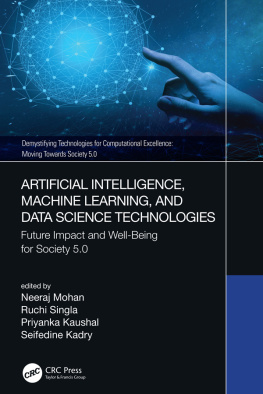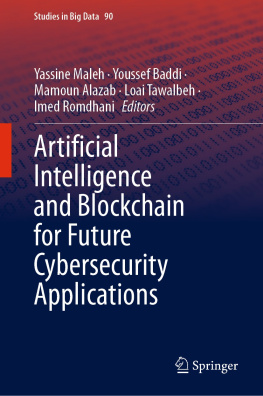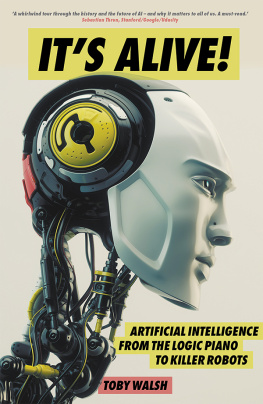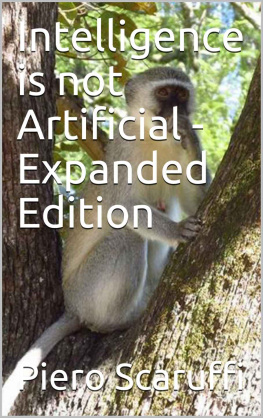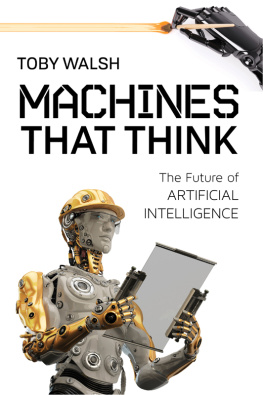Encyclopedia of
Artificial Intelligence
Encyclopedia of
Artificial Intelligence
The Past, Present, and Future of AI
Philip L. Frana and Michael J. Klein, Editors

Copyright 2021 by ABC-CLIO, LLC
All rights reserved. No part of this publication may be reproduced, stored in a retrieval system, or transmitted, in any form or by any means, electronic, mechanical, photocopying, recording, or otherwise, except for the inclusion of brief quotations in a review, without prior permission in writing from the publisher.
Library of Congress Cataloging-in-Publication Data
Names: Frana, Philip L., editor. | Klein, Michael Joseph, editor.
Title: Encyclopedia of artificial intelligence : the past, present, and future of AI / Philip L. Frana and Michael J. Klein, editors.
Description: Santa Barbara, California : ABC-CLIO, LLC, 2021. | Includes bibliographical references and index.
Identifiers: LCCN 2020035798 (print) | LCCN 2020035799 (ebook) | ISBN 9781440853265 (hardcover) | ISBN 9781440853272 (ebook)
Subjects: LCSH: Artificial intelligenceEncyclopedias.
Classification: LCC Q334.2 .K54 2021 (print) | LCC Q334.2 (ebook) | DDC 006.303dc23
LC record available at https://lccn.loc.gov/2020035798
LC ebook record available at https://lccn.loc.gov/2020035799
ISBN: 978-1-4408-5326-5 (print)
978-1-4408-5327-2 (ebook)
252423222112345
This book is also available as an eBook.
ABC-CLIO
An Imprint of ABC-CLIO, LLC
ABC-CLIO, LLC
147 Castilian Drive
Santa Barbara, California 93117
www.abc-clio.com
This book is printed on acid-free paper 
Manufactured in the United States of America
Contents
Artificial intelligence is a fast-growing branch of computer science, a discipline famous for its interdisciplinarity and free-spirited interest in next-generation challenges of automation. Within universities, it encompasses the study of intelligent agents, autonomous programs that sense and actively respond to data collected in an environment. The virtual assistants Alexa and Siri are examples of intelligent agents. Agents may be embedded in smart robots, such as driverless cars and unmanned aerial vehicles.
More broadly, artificial intelligence describes real or imagined efforts to simulate cognition and creativity. The term distinguishes machine and code from the natural intelligence of animals and people. But artificial intelligence (AI) researchers often view the brain as a natural computer and the mind as a human-made computer program. AI pioneer Herbert Simon distinguished them this way: natural occurrences possess an air of necessity about them as they observe physical laws; artificial phenomena have an air of contingency in their malleability (Simon 1981, ixxi). Even so, humans have only a handful of natural characteristics that limit their ability to learn, improve, and invent. Indeed, they are very good at adding complexity to their environment. The way forward, Simon reasoned, is not to retreat to the natural state, but to create more of the artificial world that people cannot do without.
A lot of AI has disappeared into the applications and devices we use every day. Its become so routine we dont even recognize it anymore. Bank software and Internet search engines are examples. Journalist Pamela McCorduck has identified this as the AI effect: [I]ts part of the history of the field of artificial intelligence that every time somebody figured out how to make a computer do somethingplay good checkers, solve simple but relatively informal problemsthere was a chorus of critics to say, but thats not thinking (McCorduck 2004, 204).
Instead, it might be helpful to frame artificial intelligence analogous to the way computer science generally has been defined by the new new and next big thingsas transformative smart systems and technologies that havent been invented yet. Mathematician John McCarthy coined the term artificial intelligence in 1956 to attract participants to the Dartmouth Summer Research Project, the Constitutional Convention of AI, and also boldly mark the divide between new and old approaches to understanding brain and machine. This liberating view is embodied today in Silicon Valley scientist and business leader Andrew Ngs unabashed pronouncement that AI is the new electricity.
Since the 1950s, researchers have explored two major avenues to artificial intelligence: connectionism and symbolic representation. Interest in one or the other of these approaches has waxed and waned over the decades. Connectionist approaches nurtured by cybernetics, the study of neural pathways, and associative learning dominated in the 1950s and 1960s. This was followed by a surge in interest in symbolic lines of attack from the 1970s to the mid-1990s. In this period of Good Old-Fashioned AI (GOFAI), scientists in growing artificial intelligence programs and laboratories began programming chatbots such as ELIZA and PARRY and expert systems for capturing the knowledge and emulating the skill of the organic chemist (DENDRAL), physician (INTERNIST-I), and artist (AARON).
Since 2000, more improvements in performance have been wrung out of connectionist neural network approaches. Progress is being made in machine translation, computer vision, generative design, board and video game playing, and more. Among more audacious efforts are the Blue Brain Project and Human Brain Project, which attempt computational reconstructions of whole brains. Connectionist and symbolic AI are often described as rivals, but together they account for a large share of the spectacular progress in the field. Efforts are currently underway to integrate the approaches in a structured way under the banner of neural-symbolic learning and reasoning. When brought together, neural-symbolic computation, systems, and applications may (or may not) begin to approach General AI of the sort commonly depicted in science fiction.
IN THE POPULAR IMAGINATION
Over the past hundred years, the concept of intelligent artificial beings has been a mainstay of literature and film. Beginning with Czech writer Karel apeks 1921 play R.U.R. (Rossums Universal Robots), the human imagination has been sparked by the idea of creating artificial life that has independent thought. Similar to apeks depiction, German filmmaker Fritz Langs Metropolis (1927) depicts these artificial beings as slaves to humans with little autonomy.
A watershed moment for these depictions came in 1968 with the release of Arthur C. Clarkes book and Stanley Kubricks film, both entitled 2001: A Space Odyssey. The book/films antagonist, HAL 9000, serves humans in their exploration of the source of an alien signal coming from the outer planets of our solar system. But HAL does more than serve his human masters, instead taking the initiative to kill the human astronauts on board the ship Discovery. While logical to HAL, his actions clearly depicted a concept that would figure more prominently in subsequent worksAI rebellion against humans.
For example, Blade Runner (1982) and The Terminator (1984) both depict the effects of machines having free will. In Blade Runner, replicants serve as sex slaves and soldiers banned from Earth because of their predisposition to gain empathy, a defining human trait in this work. The cyborg soldier of The Terminator, under orders from the AI Skynet, is simply a killing machine on a mission to terminate a human. And in

